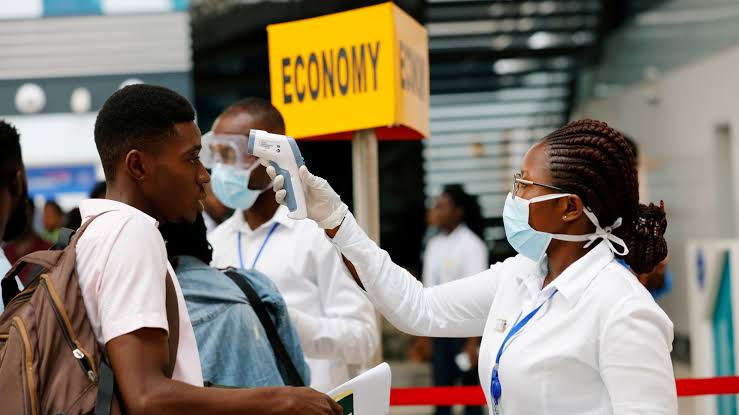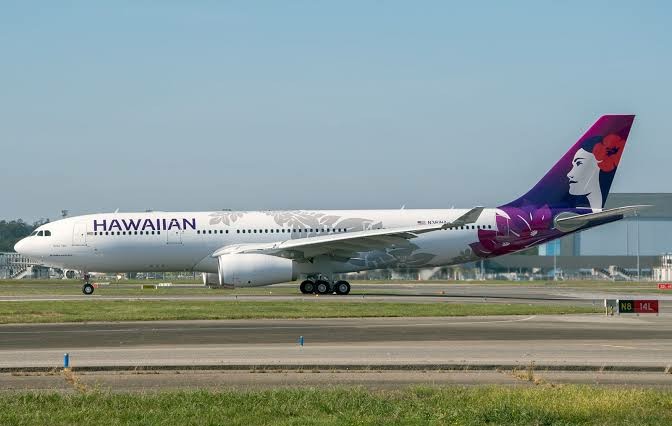We cannot over flog the subject that the invasion of the COVID-19 pandemic has and will most likely forever change our way of life as we know it. As many industries have been badly hit by the pandemic, causing a global economic meltdown, one of the industries hit the hardest is the aviation industry. That being said, the bugging question now is; what are the changes we are likely to see from here on out?
Some predictions that have been made, and will soon become the new norm. They include; Change in air fares to destinations (fares will either stay at pre-crisis levels or slightly higher), to change cabin layouts, fewer routes, pre-flight health checks and less free food, in other words, things will look very different once we start traveling again.

A seismic shift is underway as the worlds airlines reassess their operations and how they will look emerging from the crisis. At eerily empty airports, mask-wearing and social distancing already shows a behavioral change among the few staff and travelers left. A long shakeup lies ahead that is set to touch almost every aspect of flying after limits on movement unwind.
In a matter of months, the coronavirus reset the clock on a decades-long aviation boom that’s been one of the great cultural and economic phenomena of the postwar world. The explosion in air travel shrunk the planet, created jobs and hundreds of millions of first-time fliers, and dispersed families rich and poor over continents. Now its all on hold, with airlines slashing seat capacity by more than 70% since January, according to analytics firm Cirium.

There’s no knowing when people will be willing to pack into enclosed cabin spaces again, though an International Air Transport Association survey found 40% of recent travelers anticipated waiting at least six months after the virus is contained before flying again. Budget carrier EasyJet Plc is among those planning to keep middle seats empty, at least initially, to reassure customers about personal spacing. At Korean Air Lines Co., cabin crews now have goggles, masks, gloves and protective gowns.
Flight fares.
Configurations are likely to change as carriers try to squeeze more money from customers. Some will upgrade premium cabins while their fleets are grounded, resulting in an even starker difference between higher-class sections and ever more spartan economy seating, said Volodymyr Bilotkach, a lecturer in air-transport management at the Singapore Institute of Technology.

Cheap flights can be found for now as airlines compete for a handful of passengers, while inklings of a recovery show traffic on Chinas busiest routes is up at least 7% from February lows. IATAs chief executive, Alexandre de Juniac, said the wearing of face masks might reassure passengers, but keeping middle seats empty would be challenging and reduce maximum seat capacity to below break-even levels.
Parking Two-Thirds of the Worlds Planes Is Now a Big Problem

The industry has weathered storms before, but none as rough as this. Nearly two-thirds of the worlds 26,000 passenger aircraft are grounded, and some 25 million jobs are at risk. IATA has warned that carriers face a $314 billion shortfall in ticket sales this year, and half of them face bankruptcy in two to three months without government help.
Passenger Tests
A concern is that customers will be put off by health-related entry rules that may differ from country to country, especially during an uneven opening-up process. Just as airport security tightened after the September 2001 terrorist attacks in the U.S., travelers could be subject to tests like temperature checks, or they may even need health certificates to fly, according to consulting firm BCG. That could be time-consuming and complicate flying schedules.

It needs to be quick and secure. Something that is a relatively minor burden, said Dirk-Maarten Molenaar, Amsterdam-based head of BCGs travel and tourism practice in Europe, the Middle East and North Africa.
Essential Travel
The virus has led to a ballooning of remote video-conferencing, which could prompt a reassessment of the need to fly at all.
It is definitely put it back into your thinking, even if you’re not an environmentalist, the question; What is my essential travel?
Fornaro expects a shift from air to high-speed rail travel in Europe and China to accelerate. Some low-cost, short-hop routes are likely to disappear. Flights of less than 300 miles made up one fifth of the European market last year, according to a UBS report.

If mirrored in other regions such as Asia, the trend would partially unwind the aviation industry’s dramatic expansion. Short-haul flights, particularly in Europe, were already under attack from the flight-shaming movement that’s encouraged travelers to use lower carbon-emitting means of transport.
Hold up a second, where does this leave countries like Nigeria, with practically non-existent train services?
Bouncing Back
It is hard to predict any outcome while the crisis is unfolding. But there’s certain to be pent-up demand to visit family and friends once travel bans are lifted, said Jared Harckham. While airlines may have to cut prices initially to woo passengers back, hygiene concerns will gradually fade away, said Rico Merkert.
More broadly, passengers should brace for a new order in airlines and aircraft. There will definitely be fewer flight options available.

With overall capacity down, carriers will favor smaller and more manageable jets like Boeing Co.s Dreamliner and Airbus SEs A330 over behemoths like the A380, said Molenaar at BCG. Unheard-of alliances might crop up among national airlines as smaller rivals wither, he said.
The industry could look very different, he said. It could be that you go back in time, almost.

We should be prepared for a choppy, sluggish recovery even after the virus is contained, Delta Air Lines Inc. Chief Executive Officer Ed Bastian said in a letter to employees. I estimate the recovery period could take two to three years.
